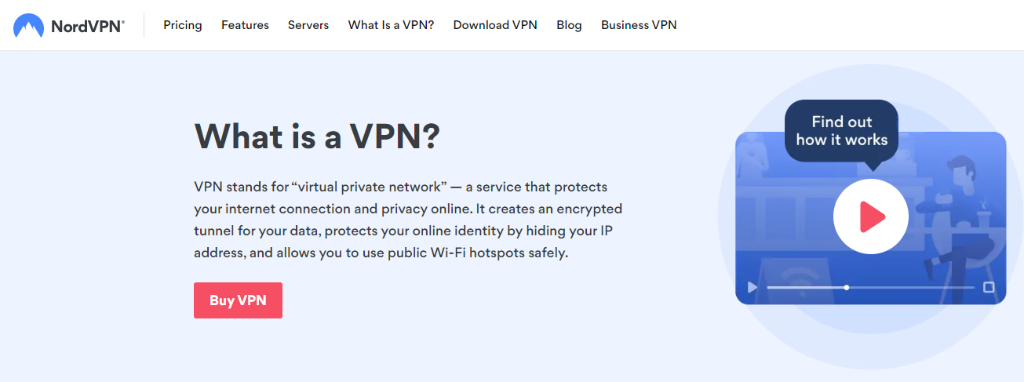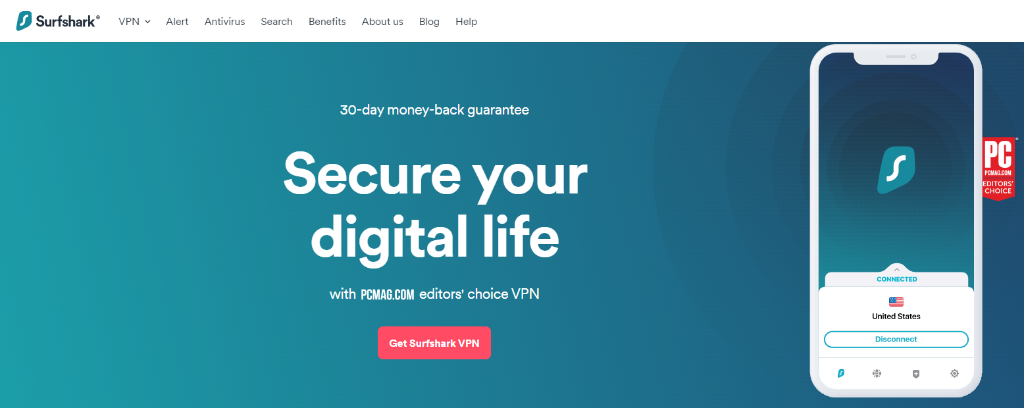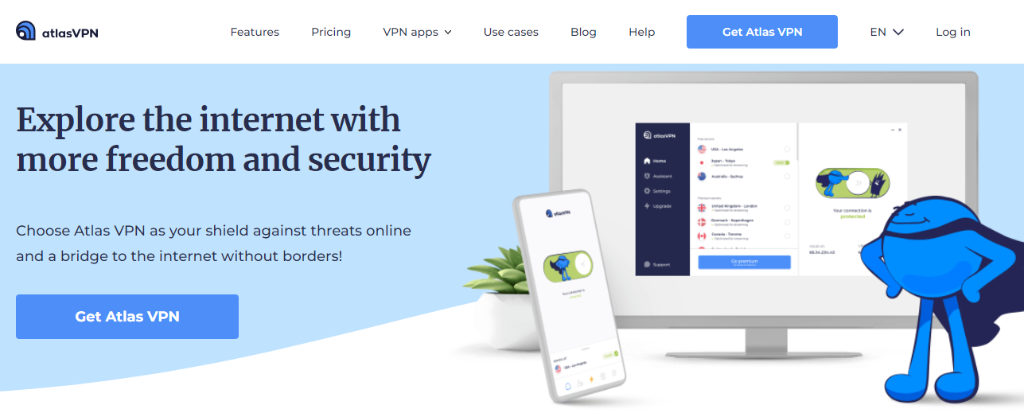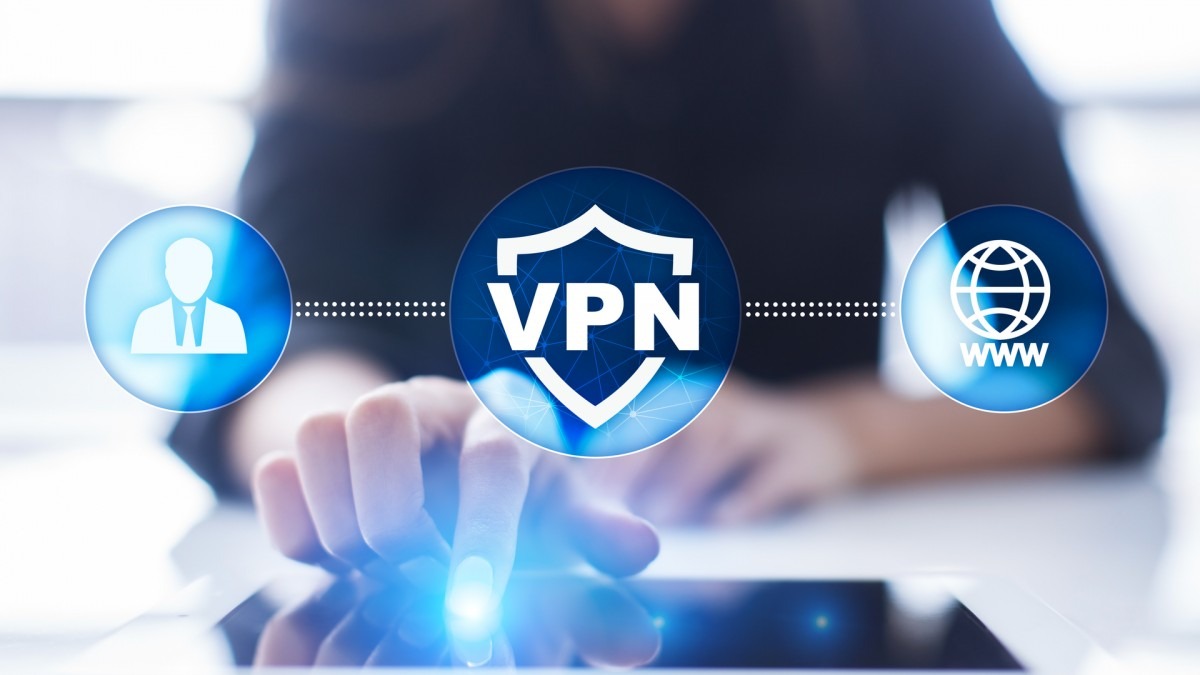
VPN Kill Switch: How It Works & Why You Need One
Posts by Colin TanApril 5, 2023
In the world of online security, VPNs have become a hot topic due to the increasing toll of cyberattacks and data breaches.
Cyber threats have become an everyday occurrence.
Hence, VPNs have gained immense popularity for their ability to protect our online data.
With VPNs being the talk of the town, you may have heard of a “kill switch” in connection with them.
Among the various security features that VPNs offer, a kill switch has emerged as a crucial tool for uninterrupted protection.
But what exactly is a kill switch? Well, if you scroll through social media very often, you might have seen those videos where people attempt to steal a piece of jewelry from a gold shop.
They walk into a jewelry store and check a valuable piece of jewelry, pretending as if they’re going to buy it.
They try to steal and make a run for it, but to their dismay, the door automatically locks as they run toward it.
The thief is now left thwarted and trapped inside the shop, only to be arrested later.
Well, a kill switch operates in a similar way.
VPNs are a great way to secure your internet connection, but what happens when your VPN connection disconnects?
Even the best VPNs can sometimes experience connection drops, leaving users vulnerable to potential cyber-attacks.
That’s where a Kill Switch springs into action. Think of it as the digital equivalent of a security system in a jewelry shop.
Similar to the auto door-locking mechanism in a store, a kill switch automatically turns off your internet connection if you get disconnected from your VPN.
This prevents any accidental data breaches or thefts that could occur during that time.
In this post, we’ll dive deep into the concept of a VPN kill switch, how it works, and why it’s an essential tool for unhindered protection.
So, let’s get started to explore how a Kill Switch by a VPN can be the ultimate key to uninterrupted security for your online activities.
Delving into the Anatomy of VPN Kill Switch: How It Works
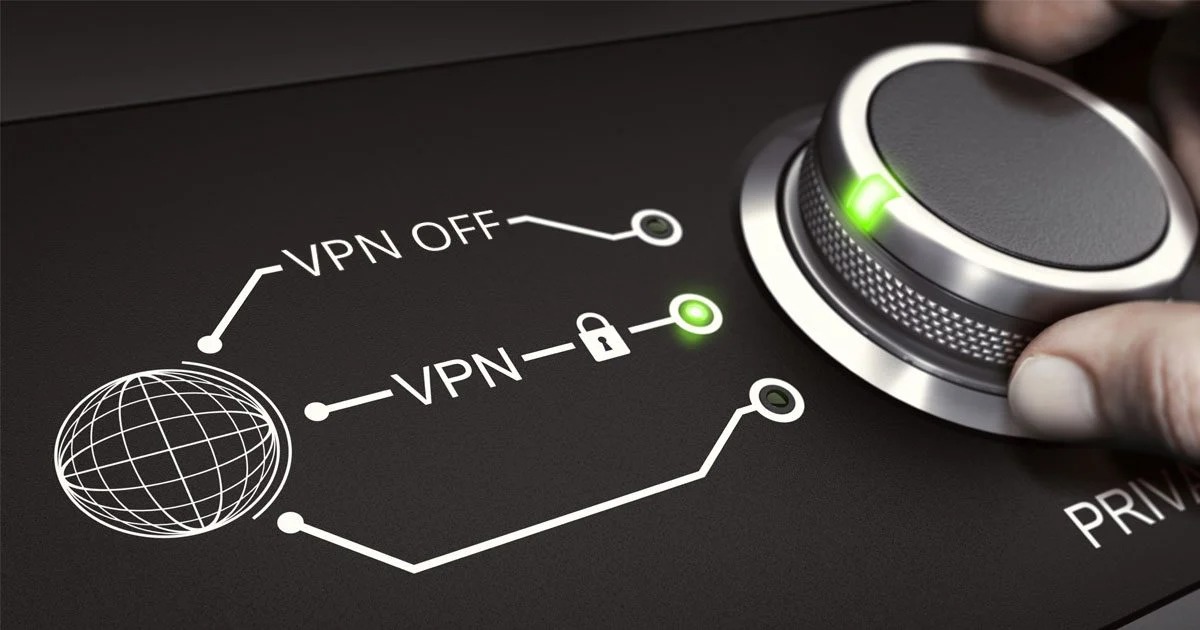
As we navigate the digital landscape, the risks we encounter grow more and more daunting.
Hacking, surveillance, and cyber-attacks loom around every corner, waiting to breach our sensitive data and personal information.
In response, Virtual Private Networks (VPNs) have become a go-to tool for online privacy and security.
However, even the most robust VPNs can falter and expose us to potential breaches. This is where the Kill Switch kicks in.
First things first, let’s clarify what a Kill Switch is.
A Kill Switch is a fail-safe mechanism that ensures your privacy and anonymity are not compromised, even if your VPN connection drops unexpectedly.
It achieves this by cutting off your device’s internet connection until the VPN connection is reestablished.
The Kill Switch is a safety net to protect your online activity from prying eyes.
Think of a Kill Switch as a security guard watching your internet connection. You may have the best security measures in place, but one slip-up and you’re exposed.
Just like a security guard prevents thieves from stealing precious gems, a kill switch automatically turns off your internet connection if you get disconnected from your VPN.
This wards off accidental data breaches and your online activities remain private and secure.
To illustrate this, imagine you’re using the internet on your laptop, curled up on your couch, while enjoying the comfort of your home.
Or maybe you are in the middle of working on an important project that requires you to access the internet.
Suddenly, the power goes out, and your internet connection goes down.
After a while, the power is restored, and you frantically try to reconnect to the internet. Eventually, you succeed.
But then you realize that you are no longer connected to the VPN! How? Well, it dropped when you disconnected from the internet and did not automatically reconnect itself when the internet was restored.
Now you’re left with a sinking feeling in your gut — your real IP address and all that sensitive data you were working with are now vulnerable and exposed.
You panic and quickly disconnect from the internet and shut down your laptop.
You can’t help but wonder if there’s a better way to ensure uninterrupted security online. Well, yes, there is!
As we mentioned, the Kill Switch by a VPN acts as a gatekeeper, blocking any traffic that isn’t encrypted and routed through your VPN.
But how does it actually accomplish this feat?
To understand how the Kill Switch works, let’s take a closer look at the anatomy of the feature.
The Kill Switch operates by constantly monitoring your VPN connection.
When you connect to a VPN, the Kill Switch is activated and starts monitoring your internet connection.
It continuously checks if your VPN connection is active.
If the Kill Switch detects that the VPN connection has been lost, it automatically blocks your internet connection.
This prevents any unprotected data from leaking out.
But what happens when your VPN connection is restored? Well, that’s the beauty of the Kill Switch.
Once your VPN connection is back up and running, the Kill Switch automatically reconnects your device to the internet.
This enables you to resume your online activity without interruption.
Types of a VPN Kill Switch
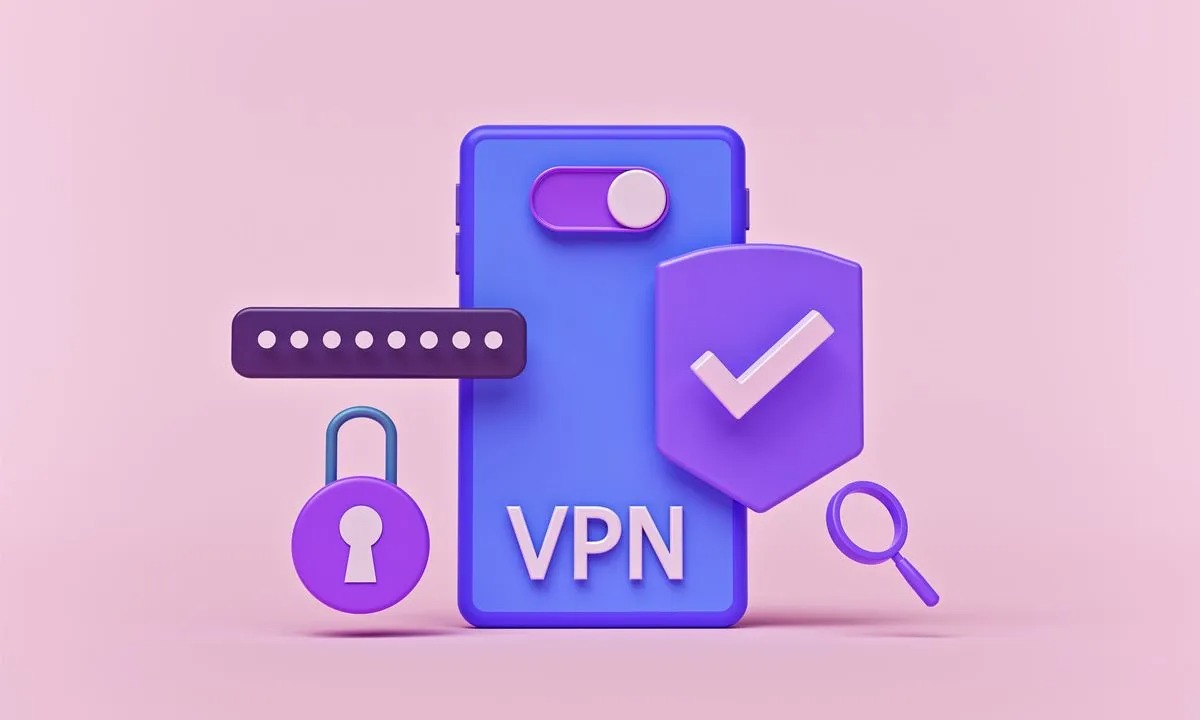
When it comes to kill switches by a VPN, there are two types you need to know about: the system-level and application-level Kill Switches.
Let’s explore how each one works.
1. System-level Kill Switch
The system-level Kill Switch operates at the operating system level. It will cut off all internet connections once the VPN connection drops.
2. Application-level Kill Switch
The application-level Kill Switch will only block specific applications that are designated by the user.
It allows you to configure your Kill Switch to only work with certain applications or protocols.
This enables you to maintain connectivity for non-sensitive tasks while protecting your confidential data.
Both types offer protection against VPN interruptions.
However, system-level kill switches are generally more reliable. They shut down all internet traffic, preventing any data leakage.
Application-level kill switches, on the other hand, offer more flexibility.
They allow you to continue browsing the internet even if your VPN connection drops.
The Consequences of Using a VPN without a Kill Switch
Traditional methods won’t cut it when it comes to safeguarding your online privacy.
That’s why VPNs have become a crucial tool in ensuring online privacy and security.
However, using a VPN alone may not always guarantee that your data and online activities are secure.
Enter the world of kill switches. It’s a cutting-edge innovation that ensures uninterrupted security amid sudden connectivity drops.
You may be surprised to learn that using a VPN without a kill switch can actually put you at risk.
It’s like driving a car without brakes. If your VPN connection drops for even a moment, your device will automatically switch back to your real IP address.
This leaves you vulnerable to potential cyber-attacks, surveillance, and legal consequences.
The aftermath of using a VPN without a kill switch can be dire and nightmarish.
But how exactly can a kill switch benefit you in combating the consequences of using a VPN without one? Let’s shed some light on it.
1. IP Leaks and Surveillance

A VPN connection can sometimes drop unexpectedly.
Without a Kill Switch, your device may automatically reconnect to the internet. This reveals your actual IP address to websites and online services.
Such an occurrence can result in unwanted tracking and surveillance by hackers, government agencies, and your ISP.
However, with a kill switch, the VPN connection is automatically severed in case of a disconnection.
This ensures that your IP address remains hidden from prying eyes keeping your online privacy intact.
2. Sensitive Information Exposure
Another risk of using a VPN without a Kill Switch is the possibility of a data breach.
Consider that your VPN connection drops while you are sharing sensitive information or conducting financial transactions.
Without a kill switch, you won’t know when your connection goes down, making it impossible to take corrective action.
Therefore, malicious third parties can potentially intercept your data during that period.
This can result in financial losses, identity theft, and reputational damage. But a Kill Switch can provide a safeguard against such data breaches.
It immediately cuts off internet access if the VPN connection fails. Hence, preventing any sensitive information from being transmitted outside the secure tunnel.
3. The Menace of Public Wi-Fi

Public Wi-Fi networks are notorious for lacking security.
Connecting to them without proper security measures is indeed a recipe for disaster.
A cybercriminal can easily intercept your online activity if your VPN connection goes down while using public Wi-Fi.
However, you can connect to public Wi-Fi networks without worrying about a kill switch.
If your VPN connection drops, the kill switch will automatically turn off your internet connection.
Thus, keeping your personal information safe from snoopy cybercriminals.
4. Exposure to Malware Attacks
When using a VPN without a Kill Switch, you also open yourself to malware attacks.
If your VPN disconnects, your data becomes vulnerable to attacks by cybercriminals.
They can also inject malware into your device, besides stealing your personal information.
A Kill Switch can hinder malware attacks by immediately getting you off the internet when the VPN connection fails.
This ensures that your data is not exposed to potential threats, preventing any malware from being injected into your device.
If your VPN connection drops, the kill switch will automatically turn off your internet connection.
Thus, keeping your personal information safe from snoopy cybercriminals.
Top 3 VPNs That Come with a Built-In Kill Switch
Are you tired of your VPN connection getting interrupted by sudden drops in network connectivity?
Well, be at ease! We have researched for you and found the top three VPNs that come with a built-in kill switch to keep you secure and uninterrupted.
Now that we’ve gone through the important reasons to use a kill switch, it’s time to reveal our top picks for the best VPNs with a built-in kill switch.
Our extensive research has led us to recommend NordVPN, Surfshark, and Atlas VPN as the top contenders in this category.
After analyzing numerous VPN services, we confidently declare them the best top-rated VPNs in the market.
These VPN providers offer a kill switch feature and have all the necessary qualities to provide a wonderful VPN experience.
So, without further ado, let’s briefly look at our top picks.
1. NordVPN — The Fort Knox of VPNs
NordVPN is a heavyweight in the VPN industry. It is a reliable and fast VPN service that provides military-grade encryption and a strict no-logs policy.
With over 5,500 blazing-fast servers in 60 countries, NordVPN delivers unparalleled performance.
Its intuitive and user-friendly software also makes safeguarding your online presence a breeze.
With NordVPN’s built-in kill switch, you can rest assured that your device will never unexpectedly connect to the internet without a VPN.
2. Surfshark VPN — Surf with Shark-Like Security
Surfshark VPN offers AES-256-GCM encryption and a strict no-logging policy. It also boasts fast connection speeds and over 3200 servers in 100 countries.
And the cherry on top? It allows unlimited simultaneous connections. Surfshark’s integrated kill switch ensures that your connection remains secure and uninterrupted.
3. Atlas VPN — The New Kid on the Block That Packs a Punch
Despite being new in the market, Atlas VPN has already made waves in the VPN world. It offers fast speeds through its 750+ servers in more than 45 locations worldwide.
It also offers a no-logging policy and strong encryption protocols such as IPSec/IKEv2 and WireGuard.
With Atlas VPN’s built-in kill switch, you can be sure your internet connection will never be compromised.
How to Set Up and Use a Kill Switch
Armed with our expert recommendations, it’s time to equip yourself with the knowledge to set up and use a kill switch by a VPN effectively.
So, let’s jump right into it.
Step 1: Choosing a VPN
Not all VPN providers come with a built-in Kill Switch, so it’s important to pick a provider with it.
Don’t forget to consider our suggestions, which include NordVPN, Surfshark, and Atlas VPN.
Step 2: Installation
Download and install the VPN software on your device. Make sure that it is the latest version of the software.
Step 3: Enabling Kill Switch
Locate the kill switch setting in the VPN software and enable it.
Depending on the provider, the kill switch feature may be under the “Settings” or “Preferences” menu.
Step 4: Configuration
After activating the kill switch, you can set its preferences. This can include choosing which applications or websites should be blocked if the VPN connection drops.
Step 5: Testing
The final step is to test the kill switch to ensure it works correctly.
To do this, simply disconnect the VPN connection and see if the kill switch blocks access to the internet.
FAQs
Will a Kill Switch Affect My Internet Speed?
No, a Kill Switch should not affect your internet speed unless your VPN connection frequently drops.
However, it may cause a temporary disruption in your internet connection when it is activated.
Can I Use a Kill Switch by A VPN on My Mobile Device?
Yes, most VPN providers offer a Kill Switch feature for mobile devices and desktop and laptop computers.
You can usually find the Kill Switch option in the VPN provider’s mobile app settings.
Are There Any Limitations or Compatibility Issues to Consider when Using a Kill Switch?
Yes, compatibility issues may arise when using a Kill Switch, particularly with older devices or operating systems.
It is important to ensure that your device and operating system are compatible with the Kill Switch feature before using it.
Additionally, some VPN providers may limit the use of their Kill Switch feature to certain plans or devices.
Key Takeaways
To wrap up, a VPN Kill Switch is not just a feature; it’s a vital aspect of ensuring uninterrupted online security.
The upshots of not having one can be disastrous.
It can lead to identity theft and financial loss, as well as reputational damage and legal consequences.
But the ability to instantly cut off internet access when the VPN connection drops can make all the difference.
So, don’t leave your online security to chance; ensure your VPN has a Kill Switch feature.
Remember, it’s better to be safe than sorry in the ever-evolving cybersecurity landscape.

